📝 Exclusive: Making "The Other Moonshot"
Host Joanne Higgins, executive producer/writer Rachel Swaby, and LAist senior editor Suzanne Levy. Insights into crafting narrative audio, leveraging archival material, and telling LA's untold stories
Welcome to the first Los Audio Exclusive, a conversation with some of the team behind The Other Moonshot, a new podcast from LAist and Reasonable Volume.
The Other Moonshot tells the story of the Black aerospace engineers behind the early Apollo missions, with firsthand accounts from three of those very engineers. It’s a Los Angeles story that was almost lost to time… Until host Joanne Higgins embarked on a mission to make her godfather’s stories into a podcast.
Throughout the series’ four parts, Joanne guides listeners through stories told by her godfather, Charlie Cheatham, and his colleagues Nathaniel LeVert and Shelby Jacobs. The Other Moonshot marks the first time any of the three have spoken to the media.
It’s a deeply engrossing story, told with the help of expertly selected archival audio, carefully crafted foley, and the voices of the men who experienced it themselves. And, of course, it’s uniquely Los Angeles.
I talked with the team about how Joanne’s vision evolved into a podcast—proof that mingling with public radio folks always pays off—the production process behind the show—including the challenge of finding the perfect foley for a very specific vintage car—and the career pivots that shaped its creators—you think you’ve heard them all, but what about film producer-turned-construction-manager?
LAist
Hired by North American Aviation for their skills and talent, Cheathem, LeVert and Jacobs were thrust into the uncertain and chaotic early Apollo missions, part of a team expected to solve the hardest engineering problems in human history.
And as Black men, they faced an additional gauntlet of racism: They had their work stolen. They were insulted and excluded regularly. And they had little support from their higher-ups. Each had to learn how to deal with the daily discrimination in his own way. Yet they stayed the course and were ultimately triumphant, driven by their love of engineering and passion for space travel.
- LAist
A few years ago, Joanne, ever the public radio fan, was at an LAist event. She struck up a conversation with the woman next to her and, as she had done in many conversations over the years, eventually started talking about her godfather, Charlie.
Throughout her childhood, Joanne had heard Charlie talk about his time as an aerospace engineer in the early days of the space race – an impressive feat on its face, made even more striking by the fact that nearly nobody knew about the role of Black engineers in the Apollo program. It was a piece of family lore that fascinated her, and one she was always eager to share.
“That day in the hospital, Charlie mentioned Apollo. I was like, ‘I don’t remember you talking about being in Apollo.’ And then I realized, oh my god, that’s the story.”
“I always had this thing for journalism,” she told me. “I would take classes and read books, and they always said, ‘Look around you, there are great stories all around you, and you’ll know it when you hear it.’”
Charlie’s tales of participating in the space race had long colored her childhood, but it was only in 2017 that Joanne learned their full context. That year, Charlie had a brief stay in the hospital, where he had little else to do but tell his stories – and when a former colleague of his came to his bedside, they began reminiscing together. Seated with the two men, Joanne was startled by a new detail.
“He’d always told those stories,” she remembers. “But that day in the hospital, Charlie mentioned Apollo. I was like, ‘I don’t remember you talking about being in Apollo.’ And then I realized, oh my god, that’s the story.”
Shelby and his daughter c. 1968 (Shelley Modaff)
It wasn’t until that day in the hospital that Joanne realized the extent of her godfather’s role in putting a man on the moon. And it was also the first time Charlie had opened up about the prejudice he faced in their field.
“Charlie had glossed over the discrimination when I was younger,” Joanne told me. “I mean, it was a handful of Black aerospace engineers inside this giant facility. It was the 1960s.”
She needed to know more. Once he was back home, Joanne started recording Charlie’s stories. With every new detail, more color and context were added to the tales she had grown up with. Joanne wasn’t going to let history leave Charlie behind, and she told his story any chance she got.
At that LAist event, the woman to whom she was telling his story just happened to be Suzanne Levy, a senior editor at LAist. Immediately, Suzanne was hooked.
“There was this lively woman next to me, and we just started chatting,” Suzanne remembers. “She said, ‘Oh, my godfather, who is Black, worked on the Apollo mission in Los Angeles.’ I was like, ‘What? What do you mean Los Angeles? What do you mean Apollo? What do you mean a Black engineer?’”
Suzanne, like so many others, had no idea that Los Angeles’ North American Aviation had played an integral part in the Apollo program. Nor did she know that Black engineers had helped build the Saturn V rocket, or the command module in which our astronauts were propelled to the moon.
Suzanne took Joanne’s business card, which stayed tucked away in a drawer for nearly a year. And the story never quite left her.
“I found it again about a year later,” Suzanne recalls. “I thought, you know what? This is still really intriguing to me, I’m going to email her.”
The two started emailing, and Suzanne pitched the show to Antonia Cerejido, LAist’s Executive Producer at the time (and now the host of Imperfect Paradise.)
“Antonia said, this is a story we haven’t heard. We need to make this.”
They called on two of Charlie’s colleagues: Shelby Jacobs, who had built the camera system that first captured the earth’s curvature from space, and Nate LeVert, who designed the engine propellant system for Saturn V's second-stage rocket. Between them, the three men had hours and hours of stories, recalled with impressive detail.
“I was so keen on getting these stories, and I didn’t want to write it all,” Joanne explains. “There was just so much detail. I had to get it on tape.”
Time was of the essence: though their memories were as sharp as ever, all three men were in their nineties. As she undertook the task of collecting their stories, Joanne remembers the pressure of an invisible hourglass – a race against the clock to capture stories that were nearly lost to time.
“I would call them a lot,” she remembers. “And I said it was to catch up. I mean, it was, but it was also, like, ‘Are you still sharp?’ They always were, but I did get nervous sometimes.”
Charlie and Joanne (Brian Feinzimer/LAist)
Joanne began interviewing all three men, whose memories were so precise that sometimes, a single story would take hours to recount. As production went on, the team was invited into the men’s homes, met their families, and pored over binders upon binders of memorabilia.
Any doubts Joanne may have had about the men’s lucidity were quickly eliminated – Nate, Charlie, and Shelby could recall the minute details of events that had happened before most of the production team had even been born.
“They had the stories already. It was up to us to just be the connective tissue.”
And then, of course, there was the Herculean task of distilling hours of tape into a cohesive, four-part narrative, without losing the subjects’ distinctive voices in the editorial process.
Rachel Swaby is the executive producer and writer at Reasonable Volume, the production studio behind the podcast. She was tasked with telling a story that was not only historically signficant, but deeply personal to its characters.
“We sat down with them for hours and hours – they had the stories already. It was up to us to just be the connective tissue,” she explained. “We didn’t want to lose their voices, we wanted this to be their story.”
Having spent her career writing and producing stories from the margins, spotlighting unheard voices, the project was right in Rachel’s wheelhouse. But it was still a daunting project.
“It was a long process; we worked on this story for three years. There was a lot of writing, but it was mainly about bringing out the best parts, and explaining the technical stuff in a way that would resonate with the audience,” Rachel said.
Joanne wanted the story to be told in the audio medium – initially, she told me, because she thought it might be faster.
“Honestly, I thought a podcast would be faster than a book,” she said, laughing. “It seemed like a quick way to do it, considering we could just record them. As it turns out, it took a long time.”
But audio also offered an element of authenticity.
“The idea is that they get to tell their story. Their voices are so distinctive, and in a podcast you can hear that passion,” Joanne explained. “You don’t lose any of the feeling.”
Rachel and Joanne wanted to minimize the filter – for Charlie, Nate, and Shelby to speak directly to the listeners. It had to be a podcast, they agreed; listeners needed to hear the story from these mens’ own mouths.
The Other Moonshot really does maximize the medium’s potential: alongside the subjects’ voices, there is painstakingly-selected foley and archival audio that puts listeners right there. We’re in the North American aviation facility; we’re having drinks with the engineers; we’re amid the tension of 1960s America.
Joanne and Nate look over memorabilia (Brian Feinzimer/LAist)
“It’s about creating the scene,” Rachel explained. “Like, there’s that scene in the first episode where Charlie is driving into North American for the first time and he gets chased by a guard. It’s hilarious, and it’s infuriating, and you’re in this moment for maybe five minutes. And when we add those sounds of the car driving, it’s just so much more immersive.”
The team spared no detail, steeping listeners in true-to-life recreations.
“We were looking into what car he was driving,” Rachel remembers. “We’re trying to find the sound of that specific door slam from that specific car. What would that engine sound like? All of those little things.”
Having started out in print journalism, it was this kind of granular scene-setting that intrigued Rachel about audio. She’d been writing for print outlets, but kept feeling that the written word left an important element out of her reporting.
“I would do these stories I was really proud of, these super moving stories, but we couldn't hear their voices. It was still filtered through me. I felt like it wasn't as moving as it could be,” she said.
When she co-founded Reasonable Volume, it was with a mission to tell unheard stories, right from the mouths of the people who experienced them.
“When you can hear them explaining their stories themselves, it’s so much more powerful. The voice can be the most moving part of the whole thing.”
“I got hooked on telling human stories in audio form – not famous people’s stories, but everyday people. And when you can hear them explaining their stories themselves, it’s so much more powerful. The voice can be the most moving part of the whole thing.”
“Rachel crafted the story,” Joanne told me. “But the place where I really came in was it being told in my voice. She’d write something, send it to me, and say, ‘Okay, put it in your voice.’ And that was how we made it really authentic.”
Writing in her own voice was one thing, but when the team suggested that Joanne host the show, she was hesitant – and that’s putting it mildly. I first asked her if she’d volunteered, and she laughed.
“I did not,” she said, with a vigorous shake of her head. “No, no, no. I did not want to do that. Suzanne insisted that I do it, and I went in kicking and screaming. Honestly, I’m still not warmed up to it. But I have to remind myself that it’s not about me, it’s about [Charlie, Nate, and Shelby.] And they sound fabulous.”
Shelby at an aerospace exhibit (Columbia Memorial Space Center)
Joanne’s background, after all, was behind the microphones and cameras, as a film and TV producer. She too, knows a thing or two about career pivots – after 13 years in the entertainment industry, she went into, of all things, construction.
“I started off wanting to be a journalist,” she remembers. “Then I decided writing was interesting, so I went into television and film production. Eventually, I became a production coordinator. And you know what? That transitioned very easily into construction; all those management skills, it was perfect. But I still always had this thing for journalism.”
Whether coordinating a TV production or building homes, the city that surrounded her was always an important part of Joanne’s life.
“I grew up here, in Compton. I went to Cal State Long Beach. And I just love the history of LA,” she says. “I’ve just always been attracted to it.”
In journalism, Joanne saw an opportunity to investigate her own curiosities; to tell the stories of Black Angelenos – the stories of her own family and community that, like the stories in The Other Moonshot, were often overlooked.
“I remember one day thinking, ‘I wonder how all the Black people got here. And that took me to the Great Migration, which then took me to the war, which then took me to aerospace. Because the aerospace industry really created the Black and white class.”
There is, after all, a reason that The Other Moonshot finds its home on a station called LAist, in a series called LA Made. Los Angeles is not just the setting of this story, it is this story.
“The idea of the title, The Other Moonshot, is that there’s the first moonshot, which is going to the moon. And then there’s the other moonshot, which is Kennedy’s idea that he could integrate aerospace.”
Los Angeles became a major aerospace hub at the dawn of the space race, and LA’s Black middle class was deeply shaped by the emerging aerospace industry. Compton, where Joanne was raised, was a neighborhood of Black professionals, thanks in large part to the jobs created by President Kennedy’s push to put an American on the moon.
“The idea of the title, The Other Moonshot, is that there’s the first moonshot, which is going to the moon. And then there’s the other moonshot, which is Kennedy’s idea that he could integrate aerospace,” Rachel explains.
It’s a part of the fabric of LA that many Angelenos have yet to discover – many, like Suzanne once was, are unaware of the intersections between the space race, race, and the City of Angels.
In The Other Moonshot, three men’s stories speak to many that may never be heard. Thanks to Joanne’s fascination with her own family history, and Suzanne’s re-discovery of a business card in her drawer, we now have the story of the other moonshot, the one that defined our city and helped establish a Black middle class.
Nate and his family: From left to right Sasha Vasquez (granddaughter), Michele LeVert (daughter), Regina LeVert (daughter), Doret LeVert (wife), Myrna LeVert-Vasquez (daughter) (Brian Feinzimer/LAist)
The fourth and final episode of The Other Moonshot is available wherever you get your podcasts, and airs on LAist 89.3 until March 31st.
The Other Moonshot is a production of LAist Studios in collaboration with Reasonable Volume. The show is hosted, co-created and executive produced by Joanne Higgins.


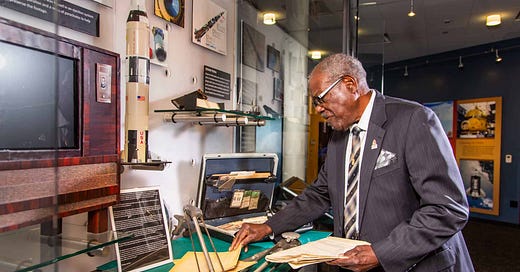

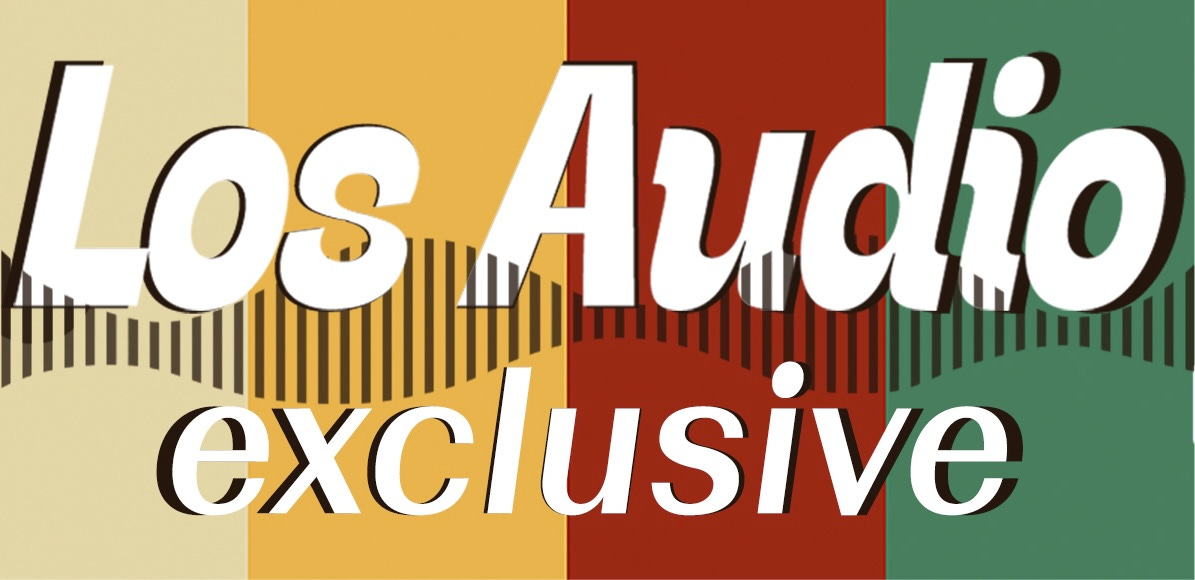
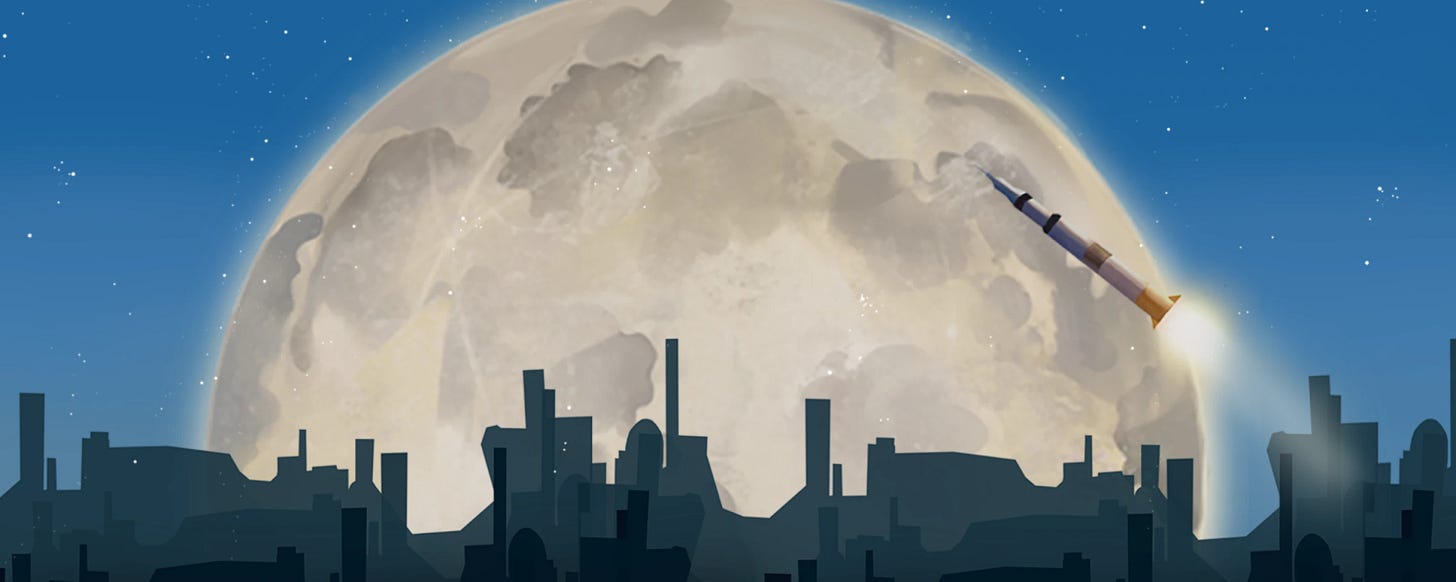

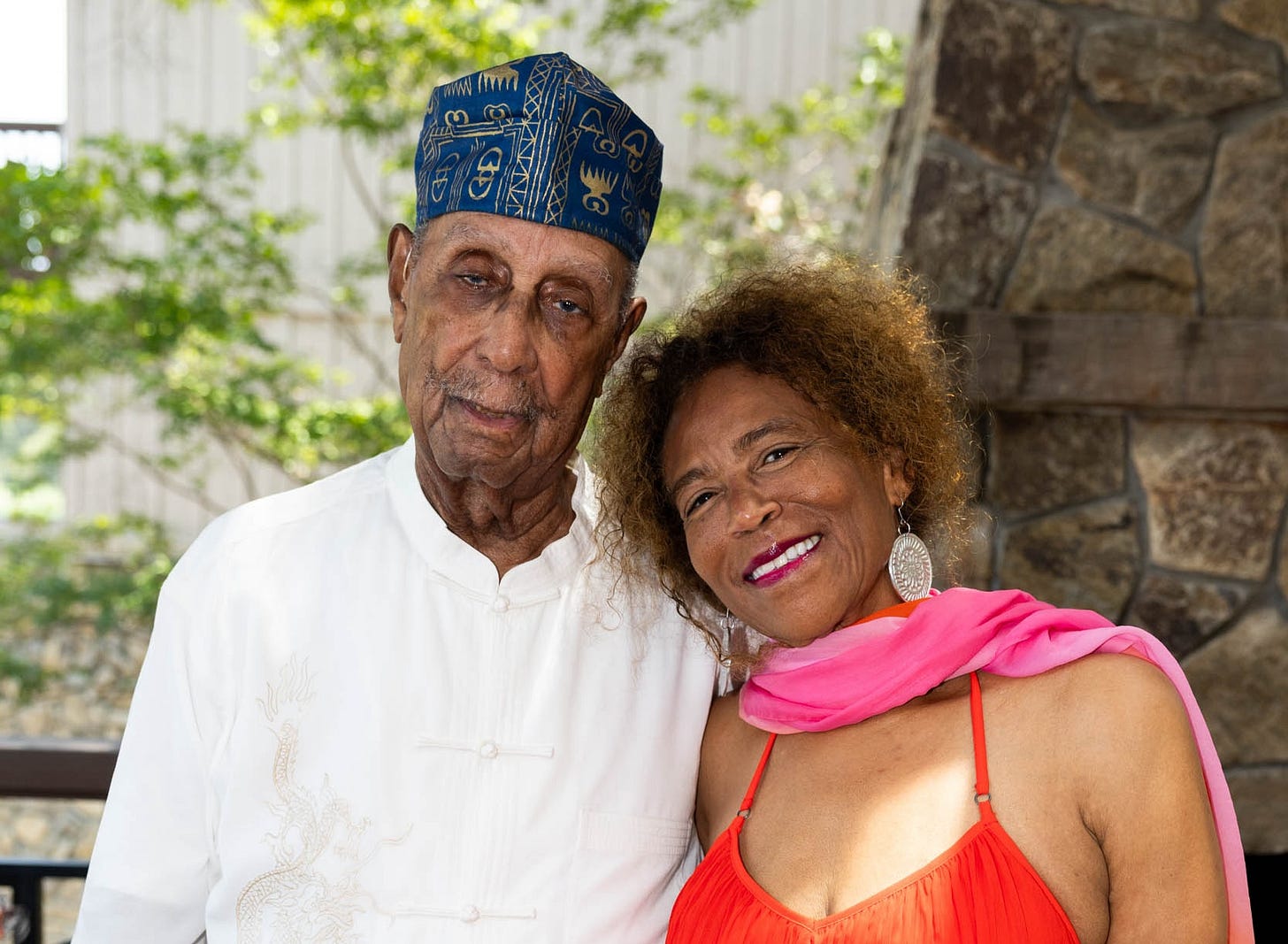
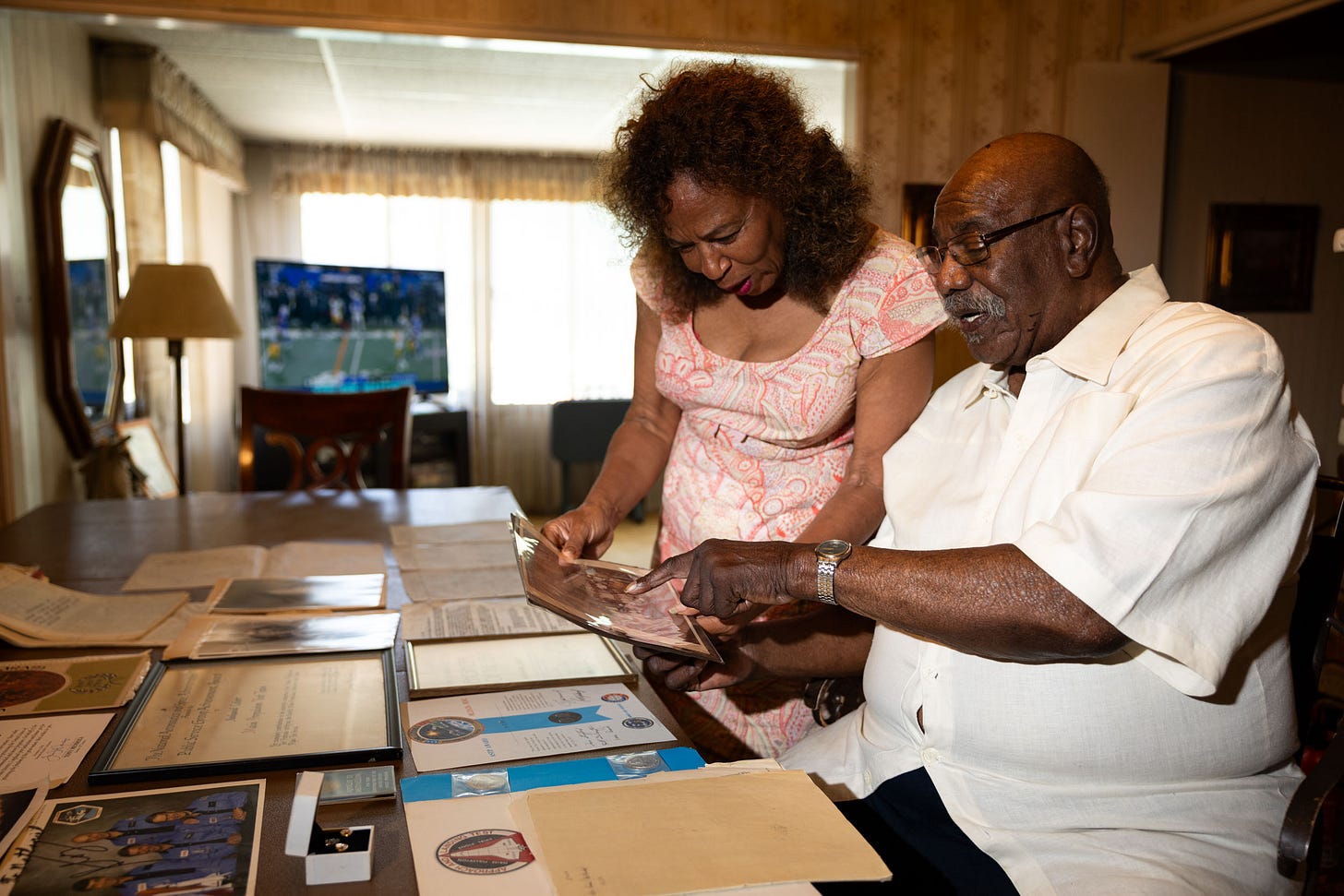

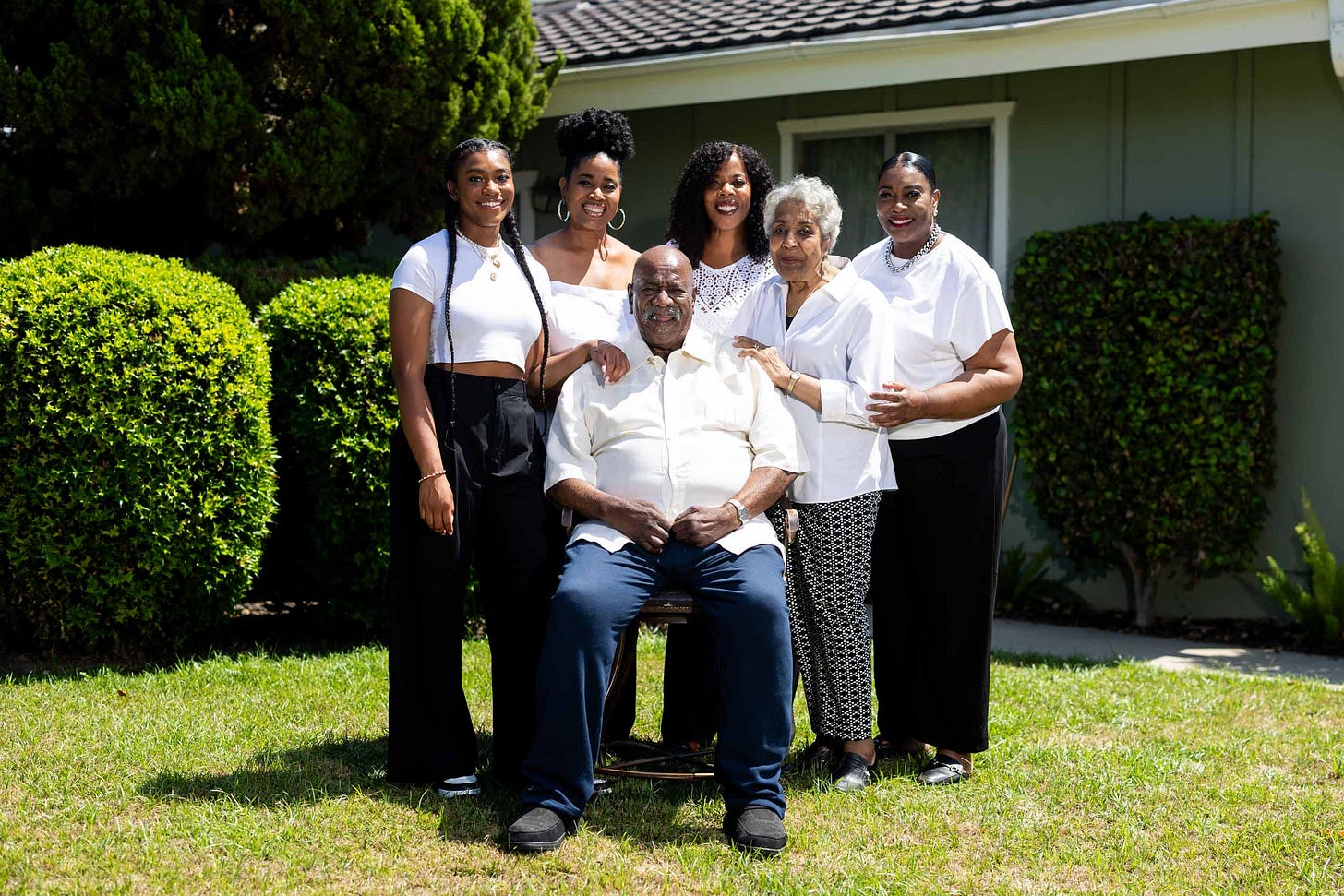
Might be the best series that I have ever listened to on NPR. This story is important and must be told and must be preserved. Thank you Joanne for doing it and may it be preserved in NASA's achieves and the Smithsonian for the time when Black Engineers are the norm, not the exception and the career paths are the grueling path of learning and not interrupted by prejudice.